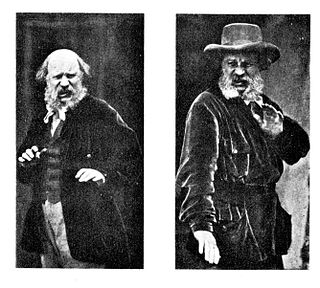
Headphones are a pair of small loudspeaker drivers worn on or around the head over a user's ears. They are electroacoustic transducers, which convert an electrical signal to a corresponding sound. Headphones let a single user listen to an audio source privately, in contrast to a loudspeaker, which emits sound into the open air for anyone nearby to hear. Headphones are also known as earspeakers, earphones or, colloquially, cans. Circumaural and supra-aural headphones use a band over the top of the head to hold the speakers in place. Another type, known as earbuds or earpieces consist of individual units that plug into the user's ear canal. A third type are bone conduction headphones, which typically wrap around the back of the head and rest in front of the ear canal, leaving the ear canal open. In the context of telecommunication, a headset is a combination of headphone and microphone.

Environmental noise is an accumulation of noise pollution that occurs outside. This noise can be caused by transport, industrial, and recreational activities.
Paralanguage, also known as vocalics, is a component of meta-communication that may modify meaning, give nuanced meaning, or convey emotion, by using techniques such as prosody, pitch, volume, intonation, etc. It is sometimes defined as relating to nonphonemic properties only. Paralanguage may be expressed consciously or unconsciously.

Goose bumps, goosebumps or goose-pimples are the bumps on a person's skin at the base of body hairs which may involuntarily develop when a person is tickled, cold or experiencing strong emotions such as fear, euphoria or sexual arousal.
Audiometry is a branch of audiology and the science of measuring hearing acuity for variations in sound intensity and pitch and for tonal purity, involving thresholds and differing frequencies. Typically, audiometric tests determine a subject's hearing levels with the help of an audiometer, but may also measure ability to discriminate between different sound intensities, recognize pitch, or distinguish speech from background noise. Acoustic reflex and otoacoustic emissions may also be measured. Results of audiometric tests are used to diagnose hearing loss or diseases of the ear, and often make use of an audiogram.

Affect, in psychology, refers to the underlying experience of feeling, emotion or mood.
Listener fatigue is a phenomenon that occurs after prolonged exposure to an auditory stimulus. Symptoms include tiredness, discomfort, pain, and loss of sensitivity. Listener fatigue is not a clinically recognized state, but is a term used by many professionals. The cause for listener fatigue is still not yet fully understood. It is thought to be an extension of the quantifiable psychological perception of sound. Common groups at risk of becoming victim to this phenomenon include avid listeners of music and others who listen or work with loud noise on a constant basis, such as musicians, construction workers and military personnel.
In the study of psychology, neuroticism has been considered a fundamental personality trait. For example, in the Big Five approach to personality trait theory, individuals with high scores for neuroticism are more likely than average to be moody and to experience such feelings as anxiety, worry, fear, anger, frustration, envy, jealousy, guilt, depressed mood, and loneliness. Such people are thought to respond worse to stressors and are more likely to interpret ordinary situations, such as minor frustrations, as appearing hopelessly difficult. They are described as often being self-conscious and shy, and tending to have trouble controlling urges and delaying gratification.

Vomiting is the involuntary, forceful expulsion of the contents of one's stomach through the mouth and sometimes the nose.
Computer audition (CA) or machine listening is general field of study of algorithms and systems for audio understanding by machine. Since the notion of what it means for a machine to "hear" is very broad and somewhat vague, computer audition attempts to bring together several disciplines that originally dealt with specific problems or had a concrete application in mind. The engineer Paris Smaragdis, interviewed in Technology Review, talks about these systems --"software that uses sound to locate people moving through rooms, monitor machinery for impending breakdowns, or activate traffic cameras to record accidents."

Underwater acoustics is the study of the propagation of sound in water and the interaction of the mechanical waves that constitute sound with the water, its contents and its boundaries. The water may be in the ocean, a lake, a river or a tank. Typical frequencies associated with underwater acoustics are between 10 Hz and 1 MHz. The propagation of sound in the ocean at frequencies lower than 10 Hz is usually not possible without penetrating deep into the seabed, whereas frequencies above 1 MHz are rarely used because they are absorbed very quickly. Underwater acoustics is sometimes known as hydroacoustics.

Frisson, also known as aesthetic chills or musical chills is a psychophysiological response to rewarding auditory and/or visual stimuli that often induces a pleasurable or otherwise positively-valenced affective state and transient paresthesia, sometimes along with piloerection and mydriasis. The sensation commonly occurs as a mildly to moderately pleasurable emotional response to music with skin tingling; piloerection and pupil dilation not necessarily occurring in all cases.
Scraping a chalkboard with one's fingernails produces a sound and feeling which most people find extremely irritating. The basis of the innate reaction to the sound has been studied in the field of psychoacoustics.
Misophonia is a disorder of decreased tolerance to specific sounds or their associated stimuli that has been characterized using different language and methodologies. Reactions to trigger sounds range from anger and annoyance to activating a fight-or-flight response. The condition is sometimes called selective sound sensitivity syndrome. Common triggers include oral sounds, clicking sounds, and sounds associated with movement. Oftentimes, hated sounds are repetitive in nature.

Disgust is an emotional response of rejection or revulsion to something potentially contagious or something considered offensive, distasteful, or unpleasant. In The Expression of the Emotions in Man and Animals, Charles Darwin wrote that disgust is a sensation that refers to something revolting. Disgust is experienced primarily in relation to the sense of taste, and secondarily to anything which causes a similar feeling by sense of smell, touch, or vision. Musically sensitive people may even be disgusted by the cacophony of inharmonious sounds. Research continually has proven a relationship between disgust and anxiety disorders such as arachnophobia, blood-injection-injury type phobias, and contamination fear related obsessive–compulsive disorder.
Psychoacoustics is the branch of psychophysics involving the scientific study of sound perception and audiology—how humans perceive various sounds. More specifically, it is the branch of science studying the psychological responses associated with sound. Psychoacoustics is an interdisciplinary field of many areas, including psychology, acoustics, electronic engineering, physics, biology, physiology, and computer science.
Robotic sensing is a subarea of robotics science intended to give robots sensing capabilities. Robotic sensing mainly gives robots the ability to see, touch, hear and move and uses algorithms that require environmental feedback.

Research into music and emotion seeks to understand the psychological relationship between human affect and music. The field, a branch of music psychology, covers numerous areas of study, including the nature of emotional reactions to music, how characteristics of the listener may determine which emotions are felt, and which components of a musical composition or performance may elicit certain reactions. The research draws upon, and has significant implications for, such areas as philosophy, musicology, music therapy, music theory, and aesthetics, as well as the acts of musical composition and of musical performance like a concert.
In psychology of art, the relationship between art and emotion has newly been the subject of extensive study thanks to the intervention of esteemed art historian Alexander Nemerov. Emotional or aesthetic responses to art have previously been viewed as basic stimulus response, but new theories and research have suggested that these experiences are more complex and able to be studied experimentally. Emotional responses are often regarded as the keystone to experiencing art, and the creation of an emotional experience has been argued as the purpose of artistic expression. Research has shown that the neurological underpinnings of perceiving art differ from those used in standard object recognition. Instead, brain regions involved in the experience of emotion and goal setting show activation when viewing art.
The psychology of music preference is the study of the psychological factors behind peoples' different music preferences. Music is heard by people daily in many parts of the world, and affects people in various ways from emotion regulation to cognitive development, along with providing a means for self-expression. Music training has been shown to help improve intellectual development and ability, though no connection has been found as to how it affects emotion regulation. Numerous studies have been conducted to show that individual personality can have an effect on music preference, mostly using personality, though a recent meta-analysis has shown that personality in itself explains little variance in music preferences. These studies are not limited to American culture, as they have been conducted with significant results in countries all over the world, including Japan, Germany, Spain, and Brazil.








